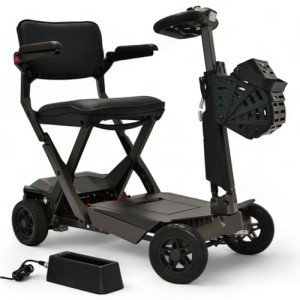Buying a Mobility Scooter: A Comprehensive Guide
Mobility scooters have actually become increasingly popular as a way of transport for people who may have trouble strolling due to age, disability, or other health conditions. These mobility devices are created to offer independence and ease of travel, whether for outdoor experiences or indoor navigation. However, with a range of alternatives readily available, choosing the best mobility scooter can be frustrating. This post intends to offer an informative guide on buying a mobility scooter, along with FAQs to help in the decision-making procedure.
Understanding Mobility Scooters
Mobility scooters are electric-powered lorries that are designed to help people with mobility obstacles. They vary in design, size, and functionality to deal with different needs. Normally, mobility scooters feature three or four wheels, a seat for the user, handlebars for steering, and are designed to navigate both indoor and outside spaces.
Types of Mobility Scooters
There are usually 3 types of mobility scooters, each dealing with particular needs:
Portable/Travel Scooters:
- Lightweight and collapsible for simple transport.
- Best for brief distances and travel.
- Limited weight capability and range.
Mid-sized Scooters:
- Offers a balance in between portability and efficiency.
- Ideal for everyday outdoor use.
- Sufficient weight capability and variety.
Sturdy Scooters:
- Designed for rougher surfaces and much heavier people.
- Normally have higher weight capabilities and longer battery life.
- Features bigger wheels and might include advanced suspension systems.
| Type | Features | Best For |
|---|---|---|
| Portable/Travel | Lightweight, collapsible | Short ranges, travel |
| Mid-sized | Balance of mobility and efficiency | Daily outdoor usage |
| Heavy-duty | Greater weight capacity, rugged design | Rough surfaces, much heavier people |
Secret Considerations When Buying a Mobility Scooter
When picking a mobility scooter, a number of factors need to be considered to ensure the very best fit for individual needs. Below is a list of essential considerations:
Weight Capacity:
- Ensure the scooter can support the user's weight easily to avoid damage and make sure security.
Range:
- Consider how far you will be taking a trip on a single charge. Battery variety can differ from around 10 to over 35 miles.
Size:
- Assess the measurements to determine whether the scooter can fit through doorways and into cars.
Terrain:
- Evaluate where the scooter will mainly be utilized (pavement, turf, rough terrain) and choose a model developed for those conditions.
Storage Space:
- If the scooter needs to be kept in a small area, size may be an important aspect.
Features and Accessories:
- Look for vital functions like adjustable seats, armrests, storage baskets, and lights.
Cost:
- Mobility scooters can vary anywhere from a couple of hundred to numerous thousand dollars. Examine your budget plan and consider financing options if necessary.
Where to Buy a Mobility Scooter
Mobility scooters can be bought from various sources, each providing different advantages. Below is a list of typical acquiring options:
Medical Supply Stores:
- These stores typically offer skilled suggestions and the opportunity to experiment with different models.
Online Retailers:
- Websites like Amazon and specialized medical devices sites use a broad range of choices, however buyers should guarantee they have a return policy in case the product is not ideal.
Direct from Manufacturers:
- Buying directly allows clients to customize their scooters, although this might take extra time.
Used Equipment Stores:
- Purchasing a used scooter can save money, however it's important to thoroughly check the scooter's condition and battery life.
FAQs About Buying a Mobility Scooter
Q: How do I know which size scooter is right for me?
A: The best size depends upon your physical dimensions and where you prepare to utilize the scooter. Check the specifications versus your measurements and consider factors like weight and comfort.
Q: Are mobility scooters covered by insurance?
A: Coverage depends upon your insurance coverage plan. Medicare might cover scooters under certain medical conditions. Lori Bloggs to talk to your provider in advance.
Q: How fast can a mobility scooter go?
A: Most mobility scooters have an optimal speed of around 4 to 8 miles per hour, depending on the design and regulations in your area.
Q: What upkeep is needed for mobility scooters?
A: Regular maintenance consists of inspecting tire pressure, keeping the battery charged, ensuring connections are clean, and inspecting mechanical parts for wear and tear.
Q: Can I take my mobility scooter on public transport?
A: Many public transport systems accommodate mobility scooters, however you should check the specific policies of your regional transit authority.
Buying a mobility scooter can greatly boost the lifestyle for individuals with mobility difficulties by offering independence and ease of movement. By understanding the types offered and considering key factors such as weight capability, variety, and desired use, potential buyers can make informed decisions. With correct research and factor to consider, one can find the ideal mobility scooter to best fit their needs, enabling them to browse the world around them with self-confidence.

